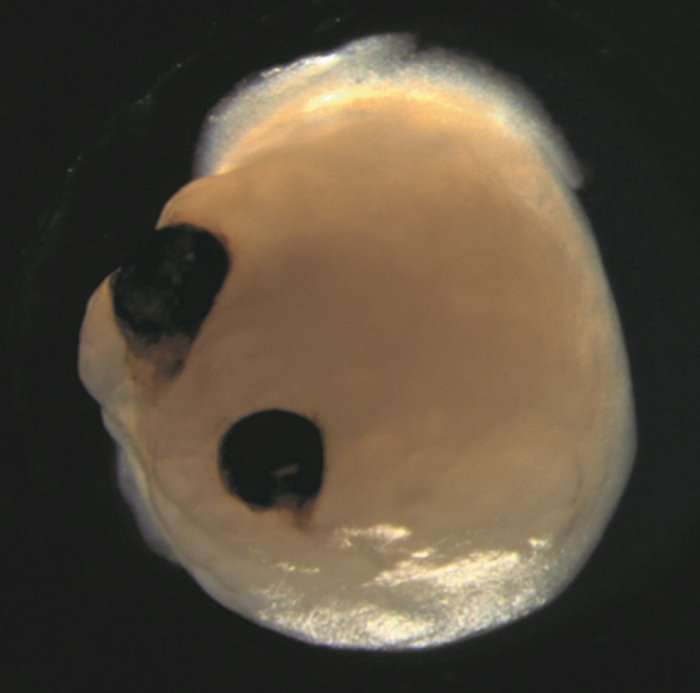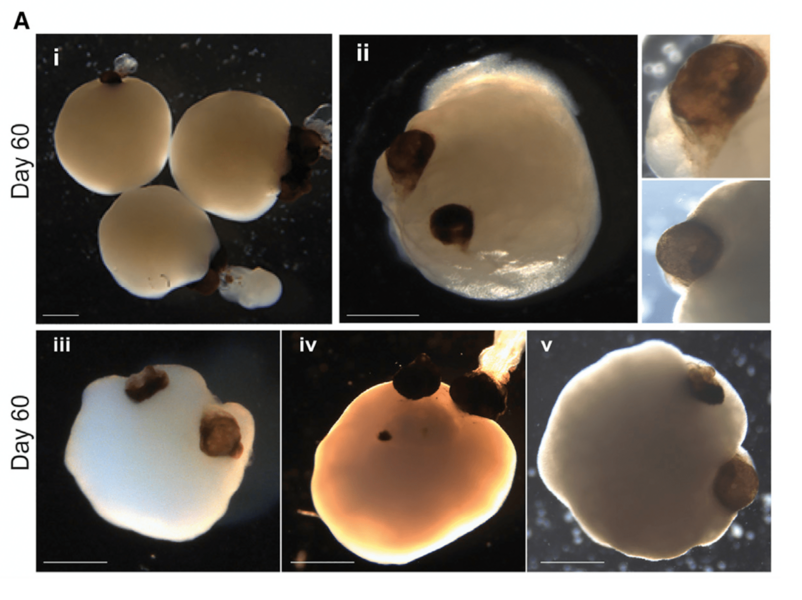Create a free profile to get unlimited access to exclusive videos, sweepstakes, and more!
As if lab-engineered mini brains couldn’t get any creepier, they just grew eyes

Organoids sound like something out of an alien horror movie. The word itself seems like it could be associated with armies of extraterrestrial clones taking over Earth.
In reality, organoids sort of are clones, but they won’t grow legs or tentacles and come after you. These blobs of tissue, grown with reverse-engineered human stem cells from the organ that is being recreated, have some semblance of that organ even if they look like something not of this planet. They have tremendous potential when it comes to testing future medications and other treatments. Now an organoid has spawned an organoid.
Jay Gopalakrishnan, a German scientist (originally from India) at the Heinrich-Heine-Universität Düsseldorf, and his colleagues recently pulled off an experiment that resulted in brain organoids growing optic cups — the embryonic structures that develop into eyes. He led a study recently published in Cell Stem Cell,
“Most retinal organoids generated so far were pure retinal organoids and did not contain the brain part," Gopalakrishnan tells SYFY WIRE. "Our method generates both brain and retinal parts together. These organoids have both the forebrain and primitive eye structures, and the retina develops from the forebrain as it normally occurs in vivo."
Proto-eyes didn’t just appear by accident. To create the organoids, the researchers used pluripotent stem cells, which are in a short-lived phase that allows them to morph into several different types of cells. Brain organoids aren’t miniaturized versions of actual brains. They lack most of the complex neural structures found in the brain, so they are not able to think or feel on their own and have no consciousness whatsoever. What they can do is provide an ethical way to test new drugs or study the progression of how certain structures form.
Gopalakrishnan’s team took a different approach from previous experiments that grew isolated proto-eyes without a brain organoid involved. His team instead succeeded in growing them as part of the brain blob by adding retinol acetate to give them a developmental boost, since previous attempts at brain organoids showed retinal cells but not much more. The upside of this was that they were able to observe how brain and eye tissue develop together, which could further help with an understanding of what causes multiple retinal diseases.
“OVB organoids can help how the forebrain region defines the eye field formation," Gopalakrishnan says. "Besides, one can study how brain-early eye components interact during the brain development. Overall, one can study inter-organ interactions within a single organoid without fusing two different tissue types."
What appear to be mouthless faces with staring eyes are actually optic-vesicle-containing brain organoids (OVB organoids). Optic vesicles are the sacs that bulge out from the forebrain as an embryo develops, eventually turning into eyes. Though they are incapable of thinking, the brain organoids showed a remarkable, nearly perfect recreation of the phases of eye growth during embryogenesis. At 30 days, the brain organoids started showing sings they were producing optic vesicles, and in double that time, they developed enough to be visible.
Everything that goes into an optic vesicle was there. That included primordial cells that would later form the cornea, retinal progenitor cells, and even retinal pigment. Progenitor cells are still able to change and differentiate like stem cells depending on what kind of tissue they make up, so they can be the precursors to more than one type of cell. Proto-eyes are even sensitive to light despite not actually seeing anything. This is because of photoreceptors, cells in the retina that respond to light. They are the structures from which eyes are thought to have evolved.
Gopalakrishnan looks forward to what discoveries these organoids could lead to, including medications and procedures that could save deteriorating vision.
“For now, we could model early developmental defects that occur in congenital retinal dystrophies, defects in eye field patterning, and defects in pigment formation in retinal cells," he says. "We cannot yet study later onset retinal disorders, as these organoids do not contain mature cell types of photoreceptors, but I hope we can further develop them to generate mature cell types."
















